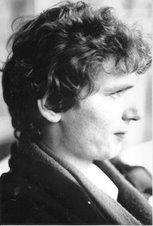Turkish Daily News: In a move that is destined to bring Belgians and Turks together as brothers, Professor Ahmet Arslan said that when the Selçuk part of the Oguz tribe formed a state in Central Asia, their capital was called Genk, having the same name as the city of Genk in Belgium.
Actually Genk was a Celtic village originally known as Geneche.
Turkish Daily News: He also said the symbol of Genk Municipality was a double headed eagle, and added as his conclusive proof, “In the Selçuk tribe, the same symbol was used. One head symbolized Interior Oguz while the other Exterior Oguz.”
The double headed eagle is a common symbol, usually associated with the Eastern Roman Empire.
Turkish Daily News: Referring to the city of Genk in Belgium, Arslan said: “There are many dark haired, light skinned people there. This is the basic characteristic of the Oguz tribe.”
Is he referring to the Turks that live their or the native Belgians? That "characteristic" is "characteristic" of many tribes. Moreover, definitions as to what constitutes "light skin" vary.
Turkish Daily News: The molecular genetic studies the department had conducted showed the main migration route from Central Asia followed the north west and west of the Caucasus Mountains, Arslan said.
He said there were close blood ties between Europeans and Turks as a result of these tribal migrations. These migrations did not expand to Western Europe, nor to Eastern Europe until the advance of the Ottoman Empire. The Oghuz Turks consisted of multiple tribes whose original homeland was in the Ural-Altaic region of Central Asia. Due to the dissolution of the Göktürk Khanate in the 8th century, the Oghuz migrated westwards to Transaxonia. From this base they would over centuries would establish the Seljuk Empire and continue west into Western Asia and Eastern Europe. While Turks did dwell in the Black Sea Steppes, and the Oghuz became first associated with the Hunnic invasions in the 3rd century (BC), the 8th century marks their first significant migration from the ethnic Turkic homeland. The Seljuks are derived from this Steppes area and migrated into Persia in the 9th century, mixing heavily with the Persians before advancing westward.
Genetic research and anthropology on Anatolia concludes the following:
1. Turkish was imposed on non-Turkic peoples
2. The original inhabitants (Mediterranean) were absorbed into the new population
3. Only 30% of present-day Turkish genes are derived from Central Asia
4. There has been continuous gene-flow from Central Asia to Anatolia for some 40 generations at a rate of 1% per generation
5. Modern Turks are closer to Iranians, Caucasians and Russians than Turkic populations in Central Asia
Wednesday, January 09, 2008
Subscribe to:
Post Comments (Atom)




2 comments:
Turkey is still busy with their genocides. Poor kids who are raised up with an enemy 'profile'.
Turkey has to do something, Otherwise it will fall apart.
That is just what I am afraid of, that Turkey will fall apart:(
Post a Comment